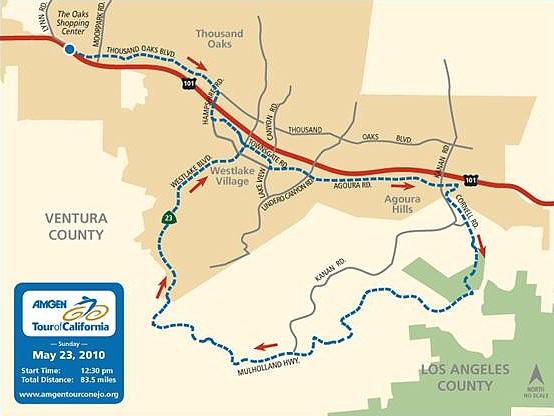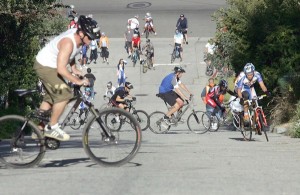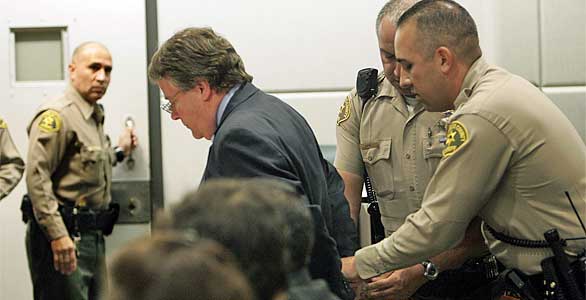League of American Bicyclists National Bike Summit 2010, March 9-11 in Washington, DC.
by Jim Hasenauer
The Summit was a great experience. 700 + advocates, 75+ of whom were mountain bikers attended. It was intense and exhausting, very well organized, and extremely motivating. Days went 8 AM-10 PM.
Here’s the scoop. Feel free to send questions:
Major announcements included:
1. Google unveiled its new
bike routes on Google Maps. It’s customizable. (Point and click on the route to change it to your needs.) Google wants feedback. If you’ve got it, click on “report a problem” to suggest routes, correct errors, etc. They’ll check out your comments and route should be changed in 30 days. Their algorithms tried to avoid traffic congestion and hills
3. Washington DC announced it was building dedicated bike lanes on Pennsylvania Avenue. They will be open by summer.
4 IMBA announced that its 5 year old Memorandum Of Understanding with the National Park Service (NPS) has been renewed for another 5 years. It promises new pilot projects and a continued commitment to work together.
Bikers of all stripes were there and you can’t imagine a more unified, pro-bike context. Very exciting.
Over the two days, we had tons of speakers including Secretary of Transportation Ray LaHood and pro-bike Congressmen Oberstar (MN) and Blumenauer (OR) and great sessions.
On Wednesday, there were panels all day. I attended the “IMBA Track”.
The first session was on “Youth Cycling”. Mike Eubank reported on
Valmont Bike Park in City of Boulder. The Boulder Mountain Bike Alliance raised 1/2 million dollars and they also got a grant from the CO lottery. While its still under construction, they’re already doing youth cyclocross, after school rides and weekend recreational riding. They see it as an extension of Safe Routes to School. All the programs are free for kids.
Dave Secunda has a for profit business
Avid4Adventure that gives kids outdoor experience focusing on mountain biking, rock climbing and kayaking. He has a contract with 12 school districts for on-campus events and also runs summer camps and family trips. During peak season he’s got 65 staff. He says start them young and actually runs programs for pre-schoolers as young as 3, 4 & 5 all the way to high school.
Julie Childer spoke about
Trips for Kids DC . Besides the basic TFK, they run a kids category in the Northern Virginia MTB Race Series. They also run learn to ride & learn to race classes and camps and NPS Interpretive Bike Tours of DC monuments. Their mission: “Teaching kids to overcome obstacles on trail and in life.”
Gary Burlanger spoke about the new
National Interscholastic Cycling Association. They hope to have 50 state high school racing by 2020. Now there is NorCal, SoCal, Colorado, and Washington. Wisconsin, Michigan and Texas are coming soon. Others are in the pipeline. There is great industry support. I think hs racing is going to take off. The vision is student athletes (required 3.0 gpa), inclusivity ( a no bench policy-everyone races), family participation, and attention to safety and risk management. Their “Coach’s Manual” is a rich “how-to” ($12. @
www.norcalmtb.org)
The Second IMBA session was “Entrepreneurial IMBA”. Jenn Dice told the sad story of mountain bikers’ relations with the US Forest Service (USFS) in Montana, but it prompted the growth of a 1000 member Montana Mountain Bike Alliance. She stressed the need of being proactive in developing model trail systems, bike parks, jump parks and pump tracks.
Ben Beamer spoke about the
Oakridge Ride Center They began trying to connect out of town forest trails, but public input stressed connecting those trails to and through town as well. They were able to secure a $400,000 earmark to build the project. Their goal is to be the MTB Capital of the northwest.
Ann, an owner of the Bike Lane in DC spoke about what retailers can do to support advocacy. MORE, the DC IMBA club now has 300 miles of trail and 32 separate place to ride in and near the metro area. There are 6000 registered users on the
MORE site .
Ryan from IMBA pitched the new Chapter Program where clubs will have the opportunity to become IMBA Chapters and will share membership and revenues with IMBA. IMBA will do the data processing, fulfillment and marketing. It looks like this year is the big rollout with the World Summit in Augusta, GA the place to get the details
https://www.imba.com/summit/2010_World_Summit.html
My panel was on the urban transportation/recreation connection. Jill Van Winkle of IMBA hosted. I spoke about the LA City Parks process and CORBA’s hard work over several years. After explaining the current status of the plan, our adversaries’ attempts to thwart us, and our letter writing campaign to keep mountain bikes in the plan and secure a stronger commitment to mountain biking, I emphasized that all cyclists, regardless of discipline need to work together and support one another. Most agreed that a mountain bike element in bike plans would become more common. There are several already including: Portland, Bend, Flagstaff and Park City. There are urban mtb trails in Philadelphia, NYC, Seattle, Chattanooga, Albuquerque, Louisville, Bozeman and probably several other places. I emphasized how bikes in urban parks was an important goal for all cyclists and how several of our Summit Political Asks (see below) are intended to improve these opportunities. Our work was well received
Vivian Neal from Oxford Mississippi talked about how their city connected bike paths to mountain bike trail systems outside town. They’re now building BMX and cyclocross facilities as well.
Several audience members spoke about their town’s accomplishments and/or needs.
This was followed by a plenary session of a panel discussion with several bike advocates and representatives of the Federal Highway Administration talking about reauthorization of the transportation bill. “Livability” is a key word for the Obama Administration and the Department of Transportation. Many of our issues are directly related to this goal and the administration is extremely supportive. Highway safety is another important goal and improving the safety of cyclists and pedestrians is high priority.
We then met in our state delegations to review talking points and coordinate our meetings. CA had about 70+ advocates, riders, retailers, industry. We had the most representatives of any state. It was terrific. A committee led by Jim Haggen-Smit of FATRAC and Dorothy Leu of LACBC put together our assignments.
Our ASKS:
The League of American Bicyclists and IMBA had six asks for our meetings with congressional staff.
1. Ask the representative to co-sponsor
HR 4722 The Active Community Transportation Act of 2010 (Blumenauer). It would appropriate $400 million for grants to local and regional governments (5-15 million each) to create “active transportation networks”.
2. Ask the representative to co-sponsor HR
1443 & S
584 the Complete Streets Act of 2009. This would require that transportation planners consider all users when planning highway facilities. 20 states including CA already have this as state policy already. These laws would make it national policy.
3. Ask the representative to co-sponsor HR
4021 and S
1156 Safe Routes to School. Both bills would expand the highly successful Safe Routes program to include eligibility for high schools. The Senate bill provides higher funding as well.
4. Ask the representative to co-sponsor
HR 3734 The Urban Revitalization and Livable Communities Act which would provide $445 million or
urban park and recreation facilities . The target is facilities for at risk youth in urban areas and these grants would be administered by HUD on a 70-30% federal/local match. Facilities could include urban trails, bike parks, jump parks etc.
5. Ask the representative to support full funding for the
Land and Water Conservation Fund . This fund goes back to the 1950’s and is authorized to provide up to $900 million for purchase of parkland and building facilities. For the last 20 years or so, the money has not been fully appropriated and while its supposed to be split between federal agencies and local agencies, recently only the feds have received funding. The two bills that would provide full funding each have their own problems. The
Senate Bill S 2747 changes the funding formula which not everyone supports. The House bill HR 3534 is a gigantic, controversial energy bill. We were instructed to push the principle, not the specific bills.
6.
Protect Public Lands but allow for continued bicycling . This ask was IMBA’s and there was no particular legislation involved. We want members of Congress to be alert that when they consider public lands bills, especially those creating Wilderness, they should consider companion designations like National Recreation Areas, National Scenic Areas, National Protection Areas, National Conservation Areas, etc. so that mountain bikers don’t lose trail opportunities. We emphasized our commitment to protecting wild places, but being unfairly hurt when Wilderness is the only designation.
On Thursday, I had three productive meetings with staff from the offices of Congresswoman Linda Sanchez, Henry Waxman and Grace Napolitano. No staff member made commitments but they were generally supportive on all counts. Waxman and Napolitano were already co-sponsor of HR 3734. Napolitano was already a co-sponsor of HR 1443.
During the day, Jenn Dice of IMBA testified before the House Subcommittee on Parks, Forests and Public Lands and was terrific in explaining how a proposed CO Wilderness Bill (HR 4289)
would affect mountain bikers . She explained that we could support 13 of the 34 proposed areas in the bill, but needed adjustments and consideration in the rest. She took a very high road, “let’s work together” approach. At the end of the hearing, Congresswoman DeGette the bill’s sponsor offered to meet with IMBA, go for a ride and even identified 3 places where she was willing to make changes. All very positive.
On Thursday night, the
California Bicycle Coalition had a reception for the CA advocates at the Summit. They are intent on revitalizing the CBC and raised several thousand dollars at the event.
All in all, this was a great event with serious networking, information sharing and the opportunity to really affect pro bike policies on the road and in the dirt.



![53005300[1]](http://corbamtb.com/news/wp-content/uploads/2010/03/530053001-300x238.jpg)



